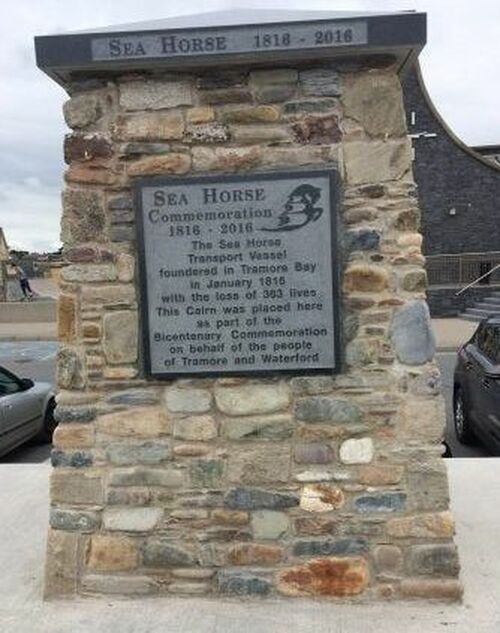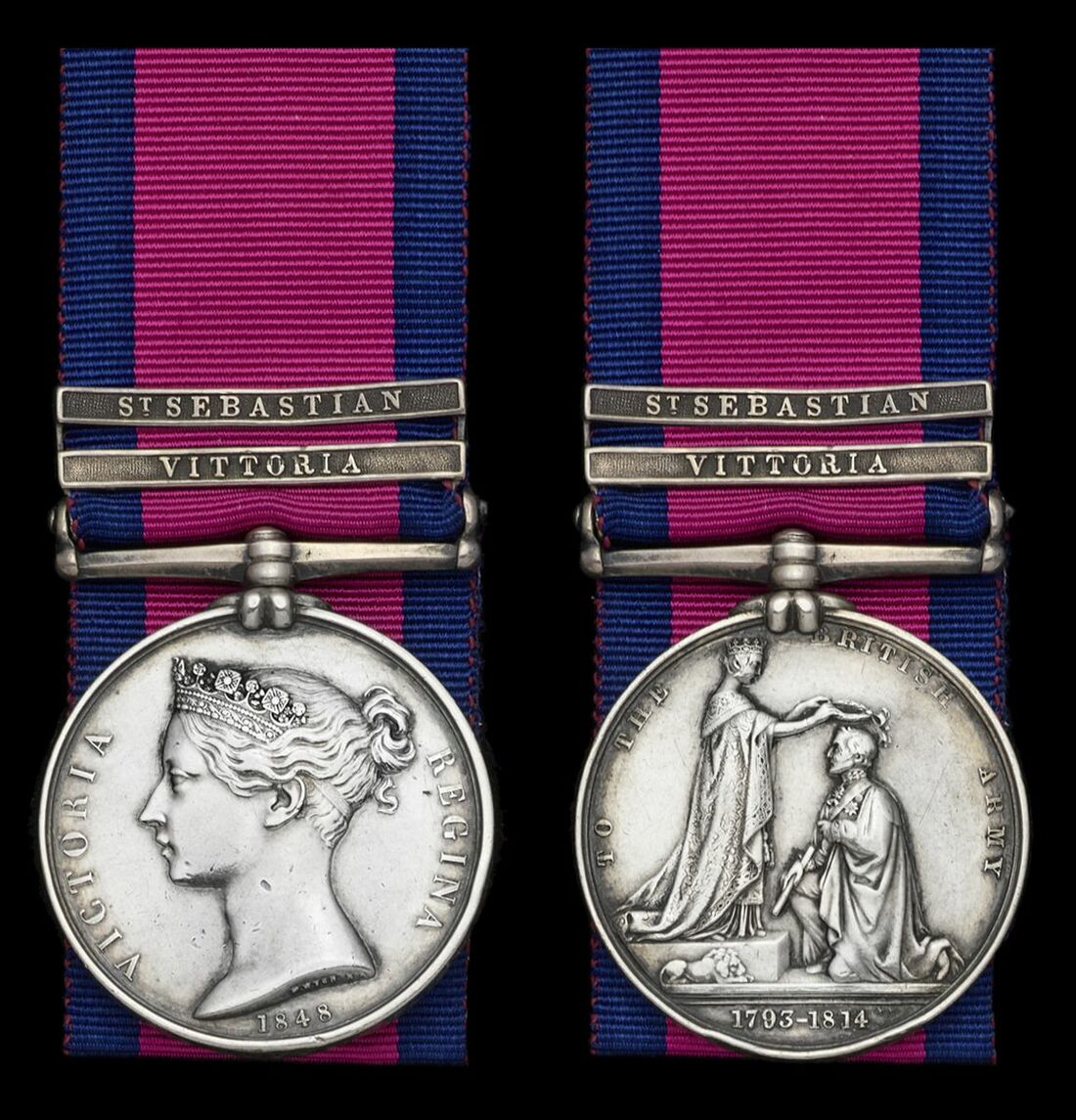Auction: 24002 - Orders, Decorations and Medals
Lot: 20
The Military General Service Medal awarded to Private J. Huffin, 59th Foot, who was one of 30 survivors from the wrecking of the Sea Horse off Tramore Bay, Ireland, on the night of 30 January 1816
Military General Service 1793-1814, 2 clasps, Vittoria, St. Sebastian (James Huffin, 59th Foot), some light edge bruising and contact marks, otherwise very fine
James Huffin was born at Ilkeston, Derbyshire and enlisted on 4 April 1809. In addition to his Peninsula War Service, Huffin was one of only thirty survivors of the Sea Horse, which was wrecked in Tramore Bay, Ireland on 31 January 1816. He was awarded a pension on 25 October 1864 when he was described as being a framework knitter. The register added 'suffers from weakness of the arm, from a blow when he was shipwrecked on the way home'. Huffin died on 14 March 1867.
The Wrecking of the Sea Horse
The Sea Horse was a merchant ship that sank in Tramore Bay during a severe storm, killing all but 30 of the 394 people on board. She had been chartered to carry members of the 2nd Battalion of the 59th (2nd Nottinghamshire) Regiment of Foot from Ramsgate to Cork. Two other ships travelling in company with the Sea Horse and carrying the rest of the battalion and members of the 82nd Regiment of Foot (Prince of Wales's Volunteers) were also wrecked nearby, killing a further 12 (Lord Melville) and 190 (Boadicea) people.
In January 1816, the battalion embarked at Ramsgate on chartered ships Sea Horse and Lord Melville. Five companies of troops, consisting of 16 officers and 287 men, embarked on Sea Horse along with 33 women and 8 children. The vessels sailed to the Downs on 25 January 1816, where they were joined by the brig Boadicea carrying 290 troops of the 82nd Regiment of Foot (Prince of Wales's Volunteers) together with 34 women and children. The ships departed at 11:00 on 28 January and headed west along the English Channel, entering the Irish Sea at 5 pm.
The weather had deteriorated during the day, and at 4 pm on 29 January, the Sea Horse's mate John Sullivan, who was the only member of that ship's officers familiar with the local Irish coastline, fell from the foremast and died three hours later from his injuries. The captain, Gibbs, was unable to locate the Kinsale lights and by this time the weather had deteriorated to a gale. At 6 am on 30 January the ship attempted to reach the sanctuary of Waterford harbour, but at 10:30 am the foretop was brought down, severely injuring a seaman. The crew prevented the ship from being driven onto the north arm of Tramore Bay by releasing its three anchors, but the sea was breaking over her from stem to stern, and by noon the anchors were dragging. The mizzen and main mast were cut free, and the rudder was destroyed by the mountainous seas. The ship ran aground on a shoal a mile from the shore in massive seas and started breaking up at 1 pm.
The boats had been destroyed and assistance from the shore was impossible in the rough seas. Only 30 men, including the captain and two seamen, survived from the 394 men, women and children on board.
Subject to 20% VAT on Buyer’s Premium. For more information please view Terms and Conditions for Buyers.
Sold for
£1,100
Starting price
£800











